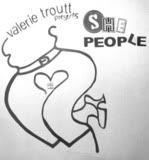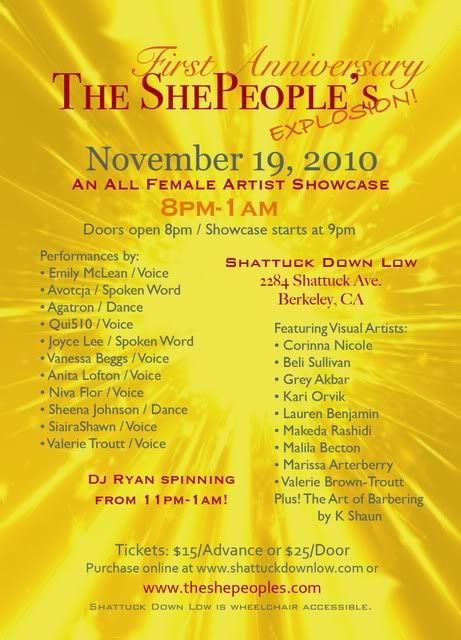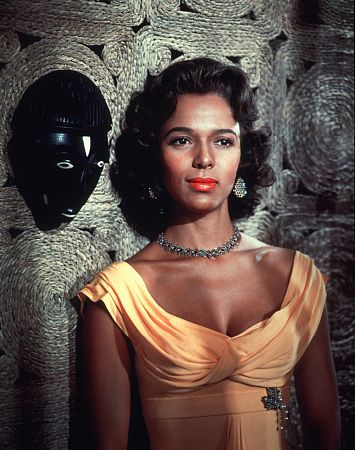By JESSE WASHINGTON
The Associated Press
Sunday, November 7, 2010; 12:01 AM
HOUSTON -- One recent day at Dr. Natalie Carroll's OB-GYN practice, located inside a low-income apartment complex tucked between a gas station and a freeway, 12 pregnant black women come for consultations. Some bring their children or their mothers. Only one brings a husband.
Things move slowly here. Women sit shoulder-to-shoulder in the narrow waiting room, sometimes for more than an hour. Carroll does not rush her mothers in and out. She wants her babies born as healthy as possible, so Carroll spends time talking to the mothers about how they should care for themselves, what she expects them to do - and why they need to get married.
Seventy-two percent of black babies are born to unmarried mothers today, according to government statistics. This number is inseparable from the work of Carroll, an obstetrician who has dedicated her 40-year career to helping black women.
"The girls don't think they have to get married. I tell them children deserve a mama and a daddy. They really do," Carroll says from behind the desk of her office, which has cushioned pink-and-green armchairs, bars on the windows, and a wooden "LOVE" carving between two African figurines. Diamonds circle Carroll's ring finger.
As the issue of black unwed parenthood inches into public discourse, Carroll is among the few speaking boldly about it. And as a black woman who has brought thousands of babies into the world, who has sacrificed income to serve Houston's poor, Carroll is among the few whom black women will actually listen to.
"A mama can't give it all. And neither can a daddy, not by themselves," Carroll says. "Part of the reason is because you can only give that which you have. A mother cannot give all that a man can give. A truly involved father figure offers more fullness to a child's life."
Statistics show just what that fullness means. Children of unmarried mothers of any race are more likely to perform poorly in school, go to prison, use drugs, be poor as adults, and have their own children out of wedlock.
The black community's 72 percent rate eclipses that of most other groups: 17 percent of Asians, 29 percent of whites, 53 percent of Hispanics and 66 percent of Native Americans were born to unwed mothers in 2008, the most recent year for which government figures are available. The rate for the overall U.S. population was 41 percent.
This issue entered the public consciousness in 1965, when a now famous government report by future senator Daniel Patrick Moynihan described a "tangle of pathology" among blacks that fed a 24 percent black "illegitimacy" rate. The white rate then was 4 percent.
Many accused Moynihan, who was white, of "blaming the victim:" of saying that black behavior, not racism, was the main cause of black problems. That dynamic persists. Most talk about the 72 percent has come from conservative circles; when influential blacks like Bill Cosby have spoken out about it, they have been all but shouted down by liberals saying that a lack of equal education and opportunity are the true root of the problem.
Even in black churches, "nobody talks about it," Carroll says. "It's like some big secret." But there are signs of change, of discussion and debate within and outside the black community on how to address the growing problem.
Research has increased into links between behavior and poverty, scholars say. Historically black Hampton University recently launched a National Center on African American Marriages and Parenting. There is a Marry Your Baby Daddy Day, founded by a black woman who was left at the altar, and a Black Marriage Day, which aims "to make healthy marriages the norm rather than the exception."
In September, Princeton University and the liberal Brookings Institution released a collection of "Fragile Families" reports on unwed parents. And an online movement called "No Wedding No Womb" ignited a fierce debate that included strong opposition from many black women.
"There are a lot of sides to this," Carroll says. "Part of our community has lost its way."
---
There are simple arguments for why so many black women have children without marriage.
The legacy of segregation, the logic goes, means blacks are more likely to attend inferior schools. This creates a high proportion of blacks unprepared to compete for jobs in today's economy, where middle-class industrial work for unskilled laborers has largely disappeared.
The drug epidemic sent disproportionate numbers of black men to prison, and crushed the job opportunities for those who served their time. Women don't want to marry men who can't provide for their families, and welfare laws created a financial incentive for poor mothers to stay single.
If you remove these inequalities, some say, the 72 percent will decrease.

"It's all connected. The question should be, how has the black family survived at all?" says Maria Kefalas, co-author of "Promises I Can Keep: Why Poor Women Put Motherhood Before Marriage."
The book is based on interviews with 162 low-income single mothers. One of its conclusions is that these women see motherhood as one of life's most fulfilling roles - a rare opportunity for love and joy, husband or no husband.
Sitting in Carroll's waiting room, Sherhonda Mouton watches all the babies with the tender expression of a first-time mother, even though she's about to have her fourth child. Inside her purse is a datebook containing a handwritten ode to her children, titled "One and Only." It concludes:
"You make the hardest tasks seem light with everything you do.
"How blessed I am, how thankful for my one and only you."
Mouton, 30, works full time as a fast-food manager on the 3 p.m. to 1 a.m. shift. She's starting classes to become a food inspector.
"My children are what keep me going, every day," she says. "They give me a lot of hope and encouragement." Her plans for them? "College, college, college."
On Mouton's right shoulder, the name of her oldest child, Zanevia, is tattooed around a series of scars. When Zanevia was an infant, Mouton's drug-addled fiance came home one night and started shooting. Mouton was hit with six bullets; Zanevia took three and survived.
"This man was the love of my life," Mouton says. He's serving a 60-year sentence. Another man fathered her second and third children; Mouton doesn't have good things to say about him. The father of her unborn child? "He's around. He helps with all the kids."
She does not see marriage in her future.
"It's another obligation that I don't need," Mouton says. "A good man is hard to find nowadays."
Mouton thinks it's a good idea to encourage black women to wait for marriage to have children. However, "what's good for you might not be good for me.," Yes, some women might need the extra help of a husband. "I might do a little better, but I'm doing fine now. I'm very happy because of my children."
"I woke up today at six o'clock," she says. "My son was rubbing my stomach, and my daughter was on the other side. They're my angels."
---
Christelyn Karazin has four angels of her own. She had the first with her boyfriend while she was in college; they never married. Her last three came after she married another man and became a writer and homemaker in an affluent Southern California suburb.
In September, Karazin, who is black, marshaled 100 other writers and activists for the online movement No Wedding No Womb, which she calls "a very simplified reduction of a very complicated issue."
"I just want better for us," Karazin says. "I have four kids to raise in this world. It's about what kind of world do we want."
"We've spent the last 40 years discussing the issues of how we got here. How much more discussion, how many more children have to be sacrificed while we still discuss?"
The reaction was swift and ferocious. She had many supporters, but hundreds of others attacked NWNW online as shallow, anti-feminist, lacking solutions, or a conservative tool. Something else about Karazin touched a nerve: She's married to a white man and has a book about mixed-race relationships coming out.
Blogger Tracy Clayton, who posted a vicious parody of NWNW's theme song, said the movement focuses on the symptom instead of the cause.
"It's trying to kill a tree by pulling leaves off the limbs. And it carries a message of shame," said Clayton, a black woman born to a single mother. "I came out fine. My brother is married with children. (NWNW) makes it seem like there's something immoral about you, like you're contributing to the ultimate downfall of the black race. My mom worked hard to raise me, so I do take it personally."
Demetria Lucas, relationships editor at Essence, the magazine for black women, declined an invitation for her award-winning personal blog to endorse NWNW. Lucas, author of the forthcoming book "A Belle in Brooklyn: Advice for Living Your Single Life & Enjoying Mr. Right Now," says plenty of black women want to be married but have a hard time finding suitable black husbands.

Lucas says 42 percent of all black women and 70 percent of professional black women are unmarried. "If you can't get a husband, who am I to tell you no, you can't be a mom?" she asks. "A lot of women resent the idea that you're telling me my chances of being married are like 1 in 2, it's a crapshoot right now, but whether I can have a family of my own is based on whether a guy asks me to marry him or not."
Much has been made of the lack of marriageable black men, Lucas says, which has created the message that "there's no real chance of me being married, but because some black men can't get their stuff together I got to let my whole world fall apart. That's what the logic is for some women."
That logic rings false to Amy Wax, a law professor at the University of Pennsylvania, whose book "Race, Wrongs and Remedies: Group Justice in the 21st Century" argues that even though discrimination caused blacks' present problems, only black action can cure them.
"The black community has fallen into this horribly dysfunctional equilibrium" with unwed mothers, Wax says in an interview. "It just doesn't work."
"Blacks as a group will never be equal while they have this situation going on, where the vast majority of children do not have fathers in the home married to their mother, involved in their lives, investing in them, investing in the next generation."
"The 21st century for the black community is about building human capital," says Wax, who is white. "That is the undone business. That is the unmet need. That is the completion of the civil rights mission."
---

All the patients are gone now from Carroll's office - the prison guard, the young married couple, the 24-year-old with a 10-year-old daughter and the father of her unborn child in jail. The final patient, an 18-year-old who dropped out of college to have her first child, departs by taxi, alone.
"I can't tell you that I feel deep sadness, because I don't," says Carroll, who has two grown children of her own. "And not because I'm not fully aware of what's happening to them. It's because I do all that I can to help them help themselves."
Carroll is on her second generation of patients now, delivering the babies of her babies. She does not intend to stop anytime soon. Her father, a general practitioner in Houston, worked right up until he died.
Each time she brings a child into this world, she thinks about what kind of life it will have.
"I tell the mothers, if you decide to have a baby, you decide to have a different kind of life because you owe them something. You owe them something better than you got."
"I ask them, what are you doing for your children? Do you want them to have a better life than you have? And if so, what are you going to do about it?"
---
Online:
On the Web: No Wedding No Womb:http://bit.ly/cBUuacDemetria Lucas:http://bit.ly/9UbGmSAmy Wax:http://bit.ly/dwNsOu
--
Jesse Washington covers race and ethnicity for The Associated Press. He is reachable at jwashington(at)ap.org.


 Family Affair, which I profiled on this blog previously, is written and produced by Chico David Colvard, and tells the story of how the filmmaker – at the age of 10 – shot his older sister in the leg. That random, accidental occurrence shattered his family, because, believing she would die from her injuries, his 9-year old sister revealed that their father had sexually molested her and her sisters for years.
Family Affair, which I profiled on this blog previously, is written and produced by Chico David Colvard, and tells the story of how the filmmaker – at the age of 10 – shot his older sister in the leg. That random, accidental occurrence shattered his family, because, believing she would die from her injuries, his 9-year old sister revealed that their father had sexually molested her and her sisters for years.













